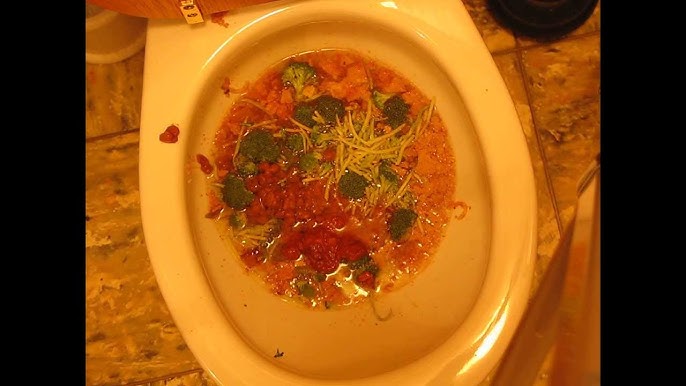Can You to Flush Food Down the Toilet?
Can You to Flush Food Down the Toilet?
Blog Article
Listed here in the next paragraphs you'll find a good deal of reliable data involving What Can Happen If You Flush Food Down the Toilet?.

Introduction
Many individuals are typically faced with the predicament of what to do with food waste, especially when it pertains to leftovers or scraps. One common question that emerges is whether it's fine to purge food down the commode. In this post, we'll delve into the reasons individuals might take into consideration flushing food, the consequences of doing so, and different approaches for correct disposal.
Reasons that individuals might think about flushing food
Absence of recognition
Some people may not be aware of the possible damage caused by purging food down the toilet. They might wrongly think that it's a safe technique.
Ease
Purging food down the commode may look like a quick and very easy remedy to disposing of undesirable scraps, specifically when there's no close-by garbage can available.
Idleness
Sometimes, people might merely select to flush food out of sheer laziness, without considering the effects of their actions.
Effects of flushing food down the commode
Environmental influence
Food waste that ends up in rivers can contribute to pollution and damage marine ecological communities. Additionally, the water used to purge food can strain water resources.
Plumbing concerns
Purging food can bring about clogged pipelines and drains, triggering expensive plumbing repair work and aggravations.
Sorts of food that must not be purged
Fibrous foods
Foods with coarse appearances such as celery or corn husks can obtain entangled in pipes and trigger obstructions.
Starchy foods
Starchy foods like pasta and rice can take in water and swell, bring about clogs in pipes.
Oils and fats
Greasy foods like bacon or cooking oils ought to never be purged down the toilet as they can solidify and create obstructions.
Correct disposal techniques for food waste
Using a waste disposal unit
For homes geared up with garbage disposals, food scraps can be ground up and purged via the plumbing system. However, not all foods are suitable for disposal in this way.
Recycling
Certain food packaging materials can be reused, decreasing waste and decreasing ecological influence.
Composting
Composting is an environment-friendly means to get rid of food waste. Organic materials can be composted and made use of to enrich dirt for gardening.
The significance of proper waste administration
Decreasing environmental injury
Appropriate waste monitoring methods, such as composting and recycling, assistance decrease pollution and preserve natural deposits for future generations.
Shielding plumbing systems
By preventing the technique of flushing food down the toilet, house owners can stop pricey pipes repairs and maintain the stability of their plumbing systems.
Verdict
In conclusion, while it may be appealing to flush food down the commode for convenience, it's important to understand the potential repercussions of this action. By taking on correct waste monitoring methods and getting rid of food waste responsibly, individuals can contribute to much healthier plumbing systems and a cleaner setting for all.
Flushing Food Down The Toilet Isn't Ideal
Garbage disposal is actually meant to carry kitchen waste. This kitchen plumbing component has made the disposing of food bits and scraps so convenient and easy. However, it is not every kitchen waste that should go down the garbage disposal.
Food waste like fish skins, eggshells, and coffee grounds are not meant for your garbage disposal. Resist the temptation to put them there!
Some persons who do not have functional disposal may be inclined to flush remains of dinner, breakfast, and lunch down the toilet. Other people may decide not to fill up their garbage disposal with organic food matter that could release foul smell in the kitchen. Thus the toilet may be a better option for them.
But, Should You Flush Food Down The Toilet?
The simple reason is that your toilet pipes that carry human waste are not wide enough to convey food waste. Remember, your toilet is meant only for water, human waste, and bio-degradable tissue paper! Food waste is potential drain-blocking materials; they do not easily disintegrate.
Although flushing a bit of food here and there may have minor consequences, a habit of flushing food waste down the toilet can be catastrophic.
Be that as it may if you're comfortable with using your toilet as a garbage disposal for kitchen waste, do it with caution. Check out the list below to know the kinds of food that shouldn't go down the toilet:
Grains like oats, rice, and others expand when mixed in water. This expansion can block your sewer line when you flush grains down the toilet Hard food scraps, including apple cores, bones, and corn cobs, do not decompose easily. Having these food items down your toilet all the time can plug up your toilet drain, block your drains, and become breeding grounds for fatbergs. Worse still, they can compromise your city's wastewater treatment processes. Dispose of this waste in your trash bin! Starchy foods like mashed potatoes can cause a gelatinous obstruction that could slow down the flow of your sewer pipe Fats and oils including butter, meat fat, cooking oils and other oil-containing foods, are not friends with your drain. When fat and oil cool harden inside the sewer lines, they can potentially block your sewage flow. Not only that, they attract other debris and form fatbergs that are disastrous Are You Having A Blocked Toilet?
Have you flushed so much food scraps down the toilet and it's causing a blockage? This is the best time to call the Emergency Plumber for help.
https://www.emergencyplumber.london/camden/blog/why-you-shouldnt-flush-food-down-the-toilet

As a serious reader on Think Twice Before Flushing Food Down Your Toilet, I figured sharing that piece of content was really useful. For those who appreciated our blog entry if you please be sure to share it. Thanks a bunch for being here. Return soon.
Request An Appointment Report this page